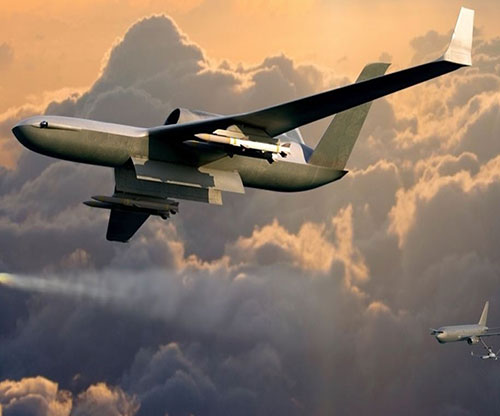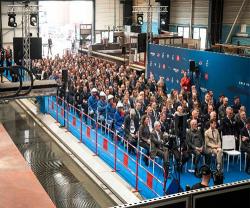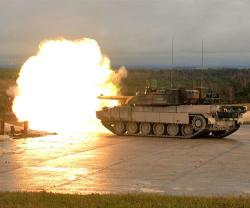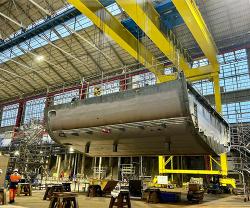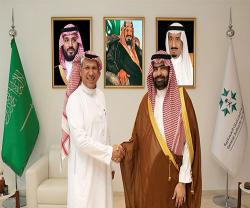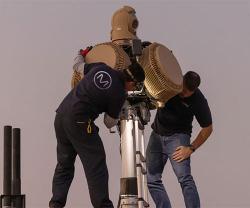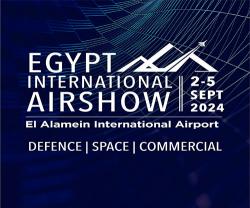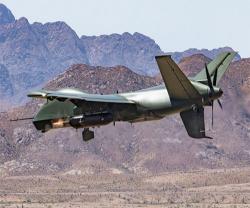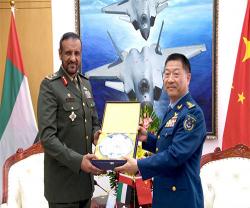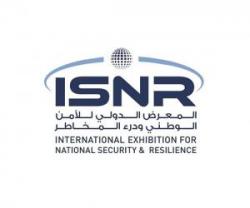General Atomics Aeronautical Systems’ earlier aircraft such as the MQ-1 Predator made their mark by constantly looking down. They changed the nature of combat because they could stay aloft indefinitely, when working in teams, and provide not only invaluable intelligence to ground forces but precise, lethal support when needed.
The nature of warfare itself, however, is changing, which means that unmanned aerial systems must evolve to keep up. In the case of GA-ASI, new UAS are setting the pace.
A wave of new aircraft, systems and capabilities mean the coming chapter of aviation will be as much about assigning counter-air roles to the successors of the Predator as sustaining their proven record in supporting ground troops and other current missions.
The MQ-9 Reaper, MQ-9B SkyGuardian and other new aircraft and systems give both ground and air commanders myriad new tools and options to provide intelligence, surveillance and reconnaissance; defend U.S. or allied forces; or, when needed, go on offense against threats in the air.
The same qualities that make remotely piloted aircraft invaluable supporting ground operations translate to certain counter-air roles: Their ability to remain on station for long periods of time, obtain and maintain battlespace awareness, and afford commanders options to employ precise lethal effects in conditions of higher risk.
Counter-Unmanned: One threat against which a UAS is ideal is another UAS. A flight of networked unmanned aircraft— with their advanced sensors, air search radars and air-to-air weapons or advanced electronic warfare payloads — could keep constant watch for incursions by unmanned aerial systems either sent to spy on friendly forces or try to attack them outright.
A UAS like the Reaper is ideally suited to help safeguard against cruise missiles – another serious threat to friendly forces – or smaller, quadcopter-style UAS trying to snoop on allied positions. When equipped with available podded systems, the MQ-9 is able to provide early warning of inbound threats as well as employ electronic warfare or other systems that could zap the small ingressors.
These aircraft also could go big. In fact, the ability of aircraft such as the Reaper or SkyGuardian to stay on station for periods of time not available to manned aircraft and operate together as part of a network gives commanders the ability to leverage their advanced sensors for enhanced situational awareness over large areas.
Air component commanders could screen a huge front of territory on the flank of a big ground operation, freeing other aircraft for direct support missions. Or they could orbit over an entire national border, or along miles of coastline, to watch for approaching aircraft. As the U.S. Air Force’s most cost-effective aircraft, already in service in large numbers, the MQ-9 is ideally suited to support such missions.
Aerial Defense: UAS in defensive roles could also prove decisive in the defense of high value airborne assets. The U.S. Air Force and its allies rely on air-to-air refueling to extend the ranges of their fleets and give them the endurance to remain available for tasking – especially in an area such as the Western Pacific, which require covering long distances over the ocean.
Advanced air forces also integrate other highly sophisticated, highly valuable manned airborne systems: The E-3 Sentry airborne early warning aircraft; the RC-135 Rivet Joint, conducting surveillance and electronic collection; the P-8 Poseidon maritime patrol and anti-submarine aircraft, and more.
These units give the U.S. Air Force, Navy and their allies peerless situational awareness and combat power – but they’re also some of the highest-priority potential targets for an adversary. They must stay forward and in the fight, but they also need protection. Devoting human-piloted fighters such as the Air Force’s F-22 or F-35 to safeguard high-value aerial assets means those fighters aren’t available for some other frontline tasking.
Enter the Defender, a new unmanned escort built by GA-ASI. These jet-powered UAS can be equipped with air-to-air weapons to be ready to defend high-value aircraft and can stay ready to do so for days at a time, relieving the burden of manned fighter squadrons. Even though it has no one onboard, Defender pairs seamlessly with human-crewed aircraft or other units because GA-ASI is a leader in manned-unmanned teaming.
Air component commanders could designate a box of airspace for the Defender to safeguard, and enable tankers to support offensive aircraft fighting their way into and out of contested battlespace as well as the other manned command and control and ISR aircraft supporting them.
Other new sensors and weapons will only improve the precision, range and lethality of unmanned systems in these roles. GA-ASI has already demonstrated capabilities that permit communications between 5th generation aircraft, seeing further, discriminating air targets and acting with significant degrees of autonomy. None of that it conceptual – it’s all flying today, including on ASI’s highly adaptable Avenger aircraft. The company will continue driving and accelerating what’s possible with automation, manned-unmanned teaming and beyond.
Small UAS: A new generation of small unmanned aerial systems also will give air component commanders more cards to play.
Some of them, such as the GA-ASI Sparrowhawk, could support friendly air operations by helping to suppress hostile anti-air systems, or provide enhanced battle space awareness or EW effects. These small aircraft, carried under the wings of a larger patrol aircraft such as SkyGuardian would help detect the locations and details about air defense sensors and even could draw the fire of surface-to-air weapons – permitting other aircraft to neutralize them and clear the way for an allied strike package.
The Sparrowhawk’s most significant attribute is that it is both air launched and air recovered on the MQ-9, providing reusable force augmentation for stand-in effects from standoff distances. A mothership MQ-9 can reel out a recovery line that the Sparrowhawk captures as it trails beneath, permitting the larger UAS to grab the smaller one safely and bring it back to refuel and prepare for another mission on another sortie.
The Army’s MQ-1C Gray Eagle can also carry new air-launched effects developed by GA-ASI, ones that help identify and suppress anti-air systems to help make conditions safer for manned rotary wing aircraft with their own assault, transport or other missions on the battlefield.
Unmanned aircraft have changed warfare, security operations and much more in their first decades of widespread use. As the nature of war evolves, including via the proliferation of more hostile unmanned systems, GA-ASI’s aircraft and systems will be ready to evolve too and lead the way into new counter-air roles - and beyond.

